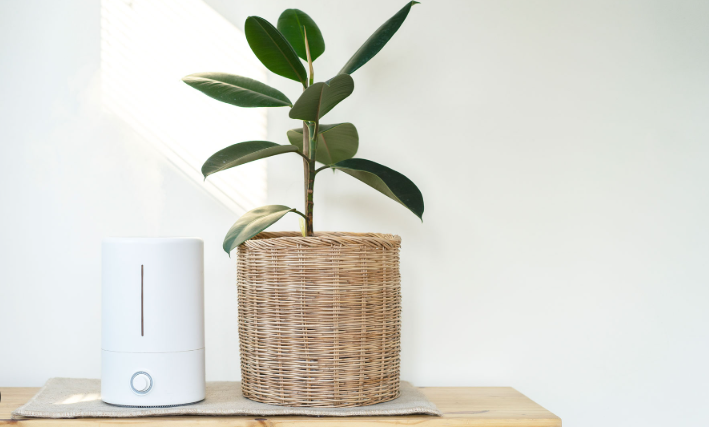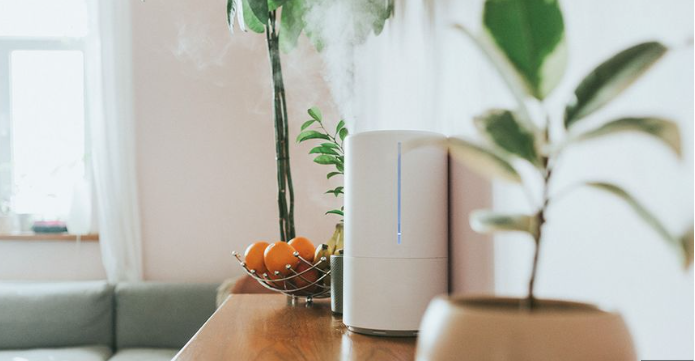If you’re wondering, why is my air purifier noisy, you’re not alone. Air purifiers are designed to improve indoor air quality quietly, but excessive noise can be disruptive and indicate underlying issues. Understanding the reasons behind a noisy air purifier and how to address them is key to restoring its smooth operation. In this comprehensive guide, we’ll explore the common causes of air purifier noise, provide actionable solutions through air purifier troubleshooting, and offer tips for proper air purifier setup and maintenance to keep your device running quietly. Whether you’re using a portable air purifier or a larger model, this article will help you achieve cleaner air without the noise.
Why Addressing a Noisy Air Purifier Matters
A noisy air purifier can disrupt sleep, work, or relaxation, making it harder to enjoy the benefits of cleaner air. Knowing why is my air purifier noisy allows you to identify whether the issue is a simple fix or a sign of a larger problem. By addressing noise issues promptly, you can extend the lifespan of your device, maintain its efficiency, and ensure a peaceful environment. Proper air purifier maintenance and usage are critical to keeping noise levels low and performance high.
Let’s dive into the common reasons your air purifier is noisy and how to fix them with practical air purifier tips.
Common Causes of a Noisy Air Purifier
Several factors can contribute to a noisy air purifier. Here are the most common culprits and how they impact your device:
- High Fan Speed: Air purifiers often become noisier at higher fan settings, as the motor works harder to circulate air. This is normal but can be disruptive in quiet settings like bedrooms.
- Clogged or Dirty Filters: A clogged filter restricts airflow, forcing the motor to work harder and produce more noise. Regular air purifier cleaning is essential to prevent this.
- Loose Components: Vibrations from loose parts, such as filter covers or panels, can cause rattling or humming sounds.
- Obstructed Air Vents: Blockages around the air intake or output vents can disrupt airflow, leading to increased noise levels.
- Worn-Out Motor: Over time, the motor or bearings may wear out, causing grinding or buzzing noises, especially in older units.
- Improper Placement: Placing the air purifier on an uneven surface or too close to walls can amplify vibrations and noise.
Understanding these causes is the first step in addressing why is my air purifier noisy. Let’s explore how to troubleshoot and fix these issues.
Air Purifier Troubleshooting: Fixing a Noisy Device
Here are practical steps for air purifier troubleshooting to reduce or eliminate noise from your air purifier:
Check and Adjust Fan Speed
If your air purifier is noisy, check the fan speed setting. Higher speeds produce more noise, especially in models not designed for quiet operation. Try these steps:
- Switch to a lower fan speed or auto mode, which adjusts based on air quality.
- Use high fan speeds only during heavy cleaning or high-pollution events, then revert to a quieter setting.
- If noise persists in auto mode, ensure the air quality sensor is clean, as dust buildup can cause incorrect fan speed adjustments.
Inspect and Clean or Replace Filters
A clogged filter is a common reason for why is my air purifier noisy. Follow these air purifier maintenance steps:
- Unplug the unit and remove the filter according to the user manual.
- Check for visible dirt or clogging. If the filter is dirty, replace it (HEPA filters typically last 6–12 months, activated carbon filters 3–6 months).
- For washable pre-filters, vacuum or rinse with lukewarm water and mild soap, ensuring they’re completely dry before reinstalling.
- Ensure filters are properly seated to prevent air leaks, which can cause whistling or rattling noises.
For more filter maintenance tips, visit our filter maintenance tips page.
Check for Loose Components
Loose parts can cause vibrations or rattling. To fix this:
- Unplug the air purifier and inspect the filter cover, panels, and other components.
- Tighten any loose screws or fittings as per the manual.
- Ensure the filter is correctly installed, as misalignment can cause noise.
Clear Air Vents
Blocked vents can disrupt airflow and increase noise. Check the air intake and output vents for dust, pet hair, or other obstructions. Use a soft brush or vacuum to clear debris, and ensure the purifier is placed in an open area with at least 12 inches of clearance on all sides.
Verify Proper Placement
Improper air purifier setup can amplify noise. Ensure the device is:
- Placed on a flat, stable surface to minimize vibrations.
- Positioned away from walls, furniture, or corners to allow proper airflow.
- Not placed near objects that could resonate with the purifier’s vibrations, such as glass or metal surfaces.
Inspect the Motor
If noise persists after addressing filters and placement, the motor may be the issue. Grinding or buzzing sounds could indicate worn bearings or motor failure. In this case:
- Consult the user manual for troubleshooting steps specific to your model.
- Contact the manufacturer for repair options, especially if the unit is under warranty.
- If the purifier is old (e.g., over 5–10 years), consider replacing it with a quieter, modern model. Check out our clean air guide for recommendations.

Preventing Noise with Regular Air Purifier Maintenance
Regular air purifier maintenance can prevent noise issues before they start. Here’s how to keep your device quiet and efficient:
- Clean the Exterior: Wipe down the purifier’s exterior with a damp cloth every 2–3 weeks to prevent dust buildup, which can clog vents and increase noise.
- Monitor Filter Condition: Check filters monthly and replace or clean them as needed to avoid strain on the motor.
- Inspect Vents Regularly: Clear dust or debris from air vents to maintain smooth airflow.
- Follow Manufacturer Guidelines: Adhere to the manual’s maintenance schedule to prevent wear and tear.
Consistent maintenance not only reduces noise but also extends the lifespan of your air purifier.
How to Clean with an Air Purifier to Minimize Noise
Using your air purifier during cleaning can stir up dust, potentially clogging filters and increasing noise. Here’s how to clean with an air purifier to keep it quiet:
- Run the purifier on a medium or high fan speed during vacuuming or dusting to capture airborne particles.
- Position the unit away from direct debris to avoid overloading the filter.
- Check and clean pre-filters after heavy cleaning sessions to prevent clogging.
These practices reduce strain on the purifier, helping it operate quietly.
Choosing a Quiet Air Purifier
If noise is a persistent issue, you may want to consider a quieter model. According to the best air purifier guide, look for these features when selecting a low-noise air purifier:
- Low Decibel Ratings: Choose models with noise levels below 50 decibels on low settings, ideal for bedrooms or quiet spaces.
- Auto Mode: Auto mode adjusts fan speed based on air quality, reducing noise when high power isn’t needed.
- High-Quality Motors: Premium models often have quieter, more durable motors.
- Portable Air Purifiers: Compact models are often designed for quiet operation, making them ideal for small spaces.
For recommendations on quiet air purifiers, explore our resources at airpurifierr.com.

Air Purifier Safety: Preventing Noise-Related Issues
Following air purifier safety practices can help prevent noise and protect your device:
- Unplug Before Maintenance: Always unplug the unit before inspecting filters or components to avoid electrical hazards.
- Avoid Overloading Outlets: Plug the purifier directly into a wall outlet to ensure stable power and prevent motor strain.
- Keep Dry: Place the unit in a dry area to avoid moisture damage, which can affect internal components and cause noise.
Conclusion: Solving Why Is My Air Purifier Noisy
Understanding why is my air purifier noisy allows you to take control and restore quiet, efficient operation. By addressing common issues like high fan speeds, clogged filters, or improper placement through air purifier troubleshooting, you can enjoy cleaner air without the disturbance. Regular air purifier maintenance and proper air purifier setup are key to preventing noise and extending your device’s lifespan.
Whether you’re using a portable air purifier or a larger unit, these air purifier tips will help you keep noise levels low. For more expert advice on maintaining and choosing a quiet air purifier, visit airpurifierr.com. Breathe easy and enjoy a peaceful, allergen-free home today!